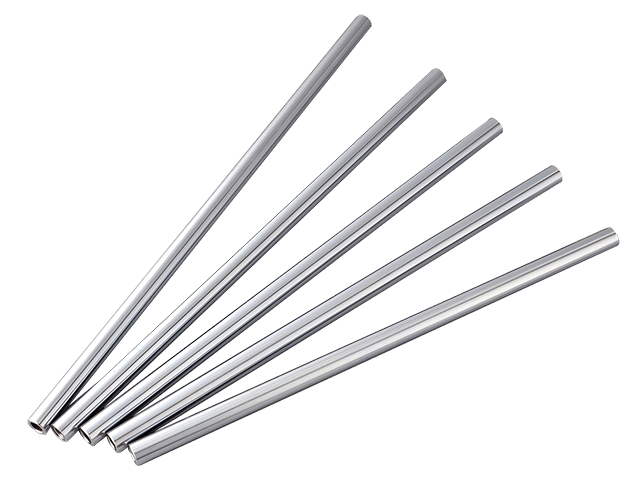Analysis Of Characteristics, Applications, And Manufacturing Processes Of Rolled Tubes
Release time:2026-01-09
Visits:0
Rolled tubes are metal pipes manufactured through roll forming processes, leveraging cold plastic working technology to enhance their comprehensive performance. They are widely used in high-precision fields such as machinery, automotive, aerospace, and others. The core process involves applying pressure to the metal surface to induce plastic deformation, thereby optimizing shape, dimensions, and surface quality, ultimately resulting in high-strength, high-uniformity tubes.
1. High Strength and Wear Resistance
The rolling process significantly improves the hardness and strength of the tube through cold work hardening. For example, the surface forms a dense fiber structure after rolling, enhancing wear resistance—particularly suitable for high-friction scenarios like hydraulic transmission. Additionally, some processes further improve impact resistance and wear resistance through composite inner-outer tube structures or additional buffer layers (e.g., flow-blocking block designs).
2. High Precision and Uniformity
Roll forming enables strict control over wall thickness and inner-outer diameter tolerances, reducing subsequent processing needs. Its straightness and roundness exceed those of traditional honed tubes, with surface roughness as low as the micrometer level—providing ideal materials for precision hydraulic cylinders and bearing assemblies.
3. Excellent Corrosion Resistance
Residual compressive stress layers formed by cold rolling inhibit crack propagation and extend service life. Some rolled tubes adopt galvanization or other surface treatments to further enhance corrosion resistance in chemical and marine environments.
Industrial Application Scenarios
1. Mechanical Manufacturing
Commonly used in high-load components such as hydraulic cylinder blocks and transmission shafts, utilizing high precision and pressure resistance to ensure equipment stability.
2. Automotive Industry
Applied in engine oil circuits and brake system pipelines, leveraging advantages in vibration resistance, impact resistance, and corrosion resistance to enhance vehicle safety.
3. Petrochemical Industry
When transporting high-pressure, corrosive media, the dense surface of rolled tubes reduces leakage risks and lowers maintenance costs.
4. Aerospace
Due to lightweight and high strength, they are frequently used in aircraft hydraulic systems and fuel delivery pipelines to meet stringent operating conditions.
Manufacturing Processes and Key Technologies
1. Material Selection
Common materials include carbon steel, alloy steel, and aluminum alloys, with composition ratios adjusted based on application scenarios. For example, chromium-containing alloy steel may be selected for high-wear environments.
2. Forming Processes
- Cold Rolling Forming: Continuously pressing metal blanks via rollers at room temperature to achieve target dimensions;
- Composite Structure Design: Adopting nested inner-outer tube processes with support rods or buffer blocks to disperse stress and improve deformation resistance;
- Flow Blocking Optimization: Internal triangular flow-blocking blocks reduce hydraulic impact damage to tube walls by altering fluid direction.
3. Post-Processing Technologies
- Heat Treatment: Eliminating processing stress and improving material toughness;
- Surface Strengthening: Further enhancing wear and corrosion resistance through plating, shot peening, and other processes.
Quality Control and Selection Recommendations
1. Appearance Inspection
High-quality rolled tubes feature scar-free, crack-free surfaces with uniformly distributed linear marks. Inferior tubes often exhibit localized insufficient strength due to impurities or processing defects.
2. Performance Testing
Hardness (HRC ≥ 30), tensile strength (≥ 500MPa), and pressure resistance must be verified to meet industry standards.
3. Process Adaptation
For bending applications, attention should be paid to uniform wall thickness at bent sections to avoid leakage or rupture risks caused by excessive thinning.
As a foundational material in modern industry, rolled tubes occupy an irreplaceable position in high-end equipment fields due to their superior performance enabled by cold working technology. Rational selection and process optimization maximize their value, contributing to enhanced equipment reliability and service life.
